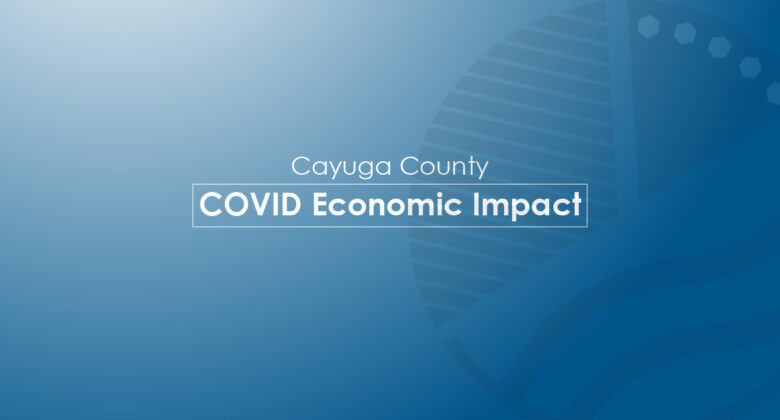
Normally at this time of year, CEDA would be hosting an Economic Forecast Luncheon. During this event, I provide an update on demographic and economic indicators. We will not be hosting a luncheon, so I wanted to take this opportunity to provide some updates. Demographic data tends to be a year behind, and it just doesn’t seem relevant to talk about data from 2019. Economic data can also be a tad sluggish, but there is information available from 2020.
Let’s start with employment and wages. The NYS Department of Labor has preliminary data available through the second quarter of 2020. As expected, Cayuga County really saw the employment impacts of COVID in the second quarter. Overall, Cayuga County had nearly 4,000 fewer jobs in the second quarter of 2020 compared to 2019. The height of this decrease was in April, which was the initial phase of shut downs with very few businesses operating, and many of those operating with a reduced staff. In April 2020, there were over 4,600 fewer jobs than in April 2019. However, employment levels did start to increase in May and June as the phased reopening was underway. I suspect this trend will continue through the third quarter, but that data is not yet available. Average wages, on the other hand, have outpaced 2019. So there were fewer jobs, but those jobs on average were paying higher wages. In the second quarter, average monthly wages were up nearly $1,000 versus 2019. It was challenging for employers to bring employees back and to find new employees after the initial shutdown, so it is possible that some employers increased their wages as a recruitment tool.
These impacts, however, were not spread equally among all sectors. In the second quarter, sectors that saw the largest percentage decrease in employment (compared to 2019 Q2) were: Arts, Entertainment, and Recreation; Accommodation and Food Services; Other Services (which includes personal care services); Transportation and Warehousing; and Construction. Most of these industries rely on in-person service, and many were among the last to reopen or expand operations under the reopening plan. On the flip side, professional sectors saw the smallest percentage declines in employment (Finance and Insurance; Professional and Technical Services; and Information). While these sectors did see a decline, it’s easy to see how these types of industries might have been more able to adjust to remote work and services. The only industry that did not see a decline in employment during the second quarter was Agriculture. This industry had already been making some adjustments as a result of the Farm Laborers Fair Labor Practices Act that went into effect on January 1, 2020, so employment trends may be impacted by that as well.
Next, we can look at unemployment and labor force data. This data is available from the NYS Department of Labor through November 2020, so it gives us a much more recent picture of trends. The unemployment rate in Cayuga County was in the area of 5% right up until April when it jumped to 15.3% during the initial shutdown. In May, we started to see improvement with the rate dropping to 10.6%. We saw another spike to 11.8% in July, but then by September we were back to 5.3% and remained in the area of 5% through November. Cayuga County’s unemployment rate has been lower than that of our region throughout the COVID period. One might think that this might be due to a reduction in the labor force as opposed to a true reduction in unemployment, and after August there is some merit to that argument. During the period that enhanced unemployment benefits were being offered, the labor force actually trended above 2019 levels. That might indicate that disenfranchised workers were not dropping out of the labor force because they were able to stay on unemployment, so they continued to be included in the count. It isn’t unusual for Cayuga County to see a dip in the labor force heading into the fall, but this year the drop between September and October was larger than usual. There could be any number of factors contributing to this, but the expiration of the supplemental unemployment benefit and no new federal deal in sight at that point may have been contributing factors.
Anecdotally, we are still seeing the impacts of COVID on businesses and workers, even if the data isn’t available yet. We’ve spoken about workforce development and the challenges of connecting the right workers to the right jobs at a past Economic Forecast Luncheon. Those same challenges just heighten the issues we are seeing now. Looking into 2021, CEDA is committed to working with our local and regional partners to address these and other challenges around workforce alignment and worker-employer connections. Doing so will only strengthen our businesses, workforce, and local economy in the long run.





